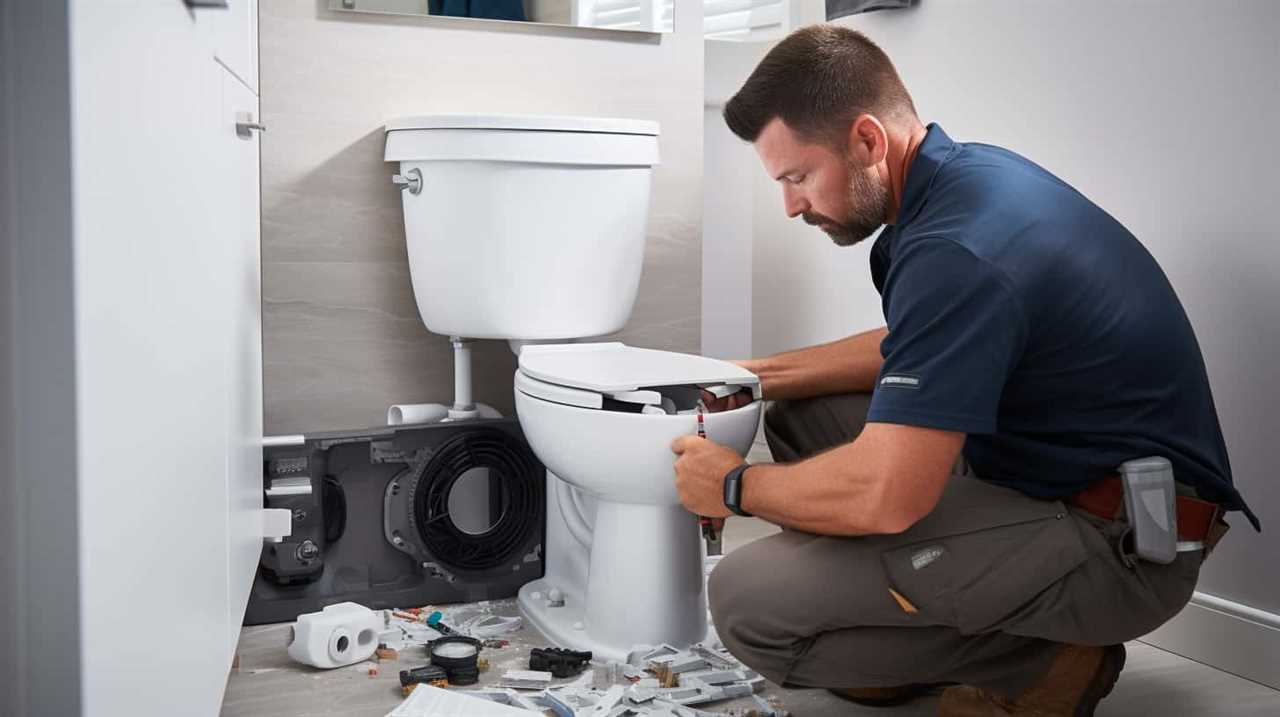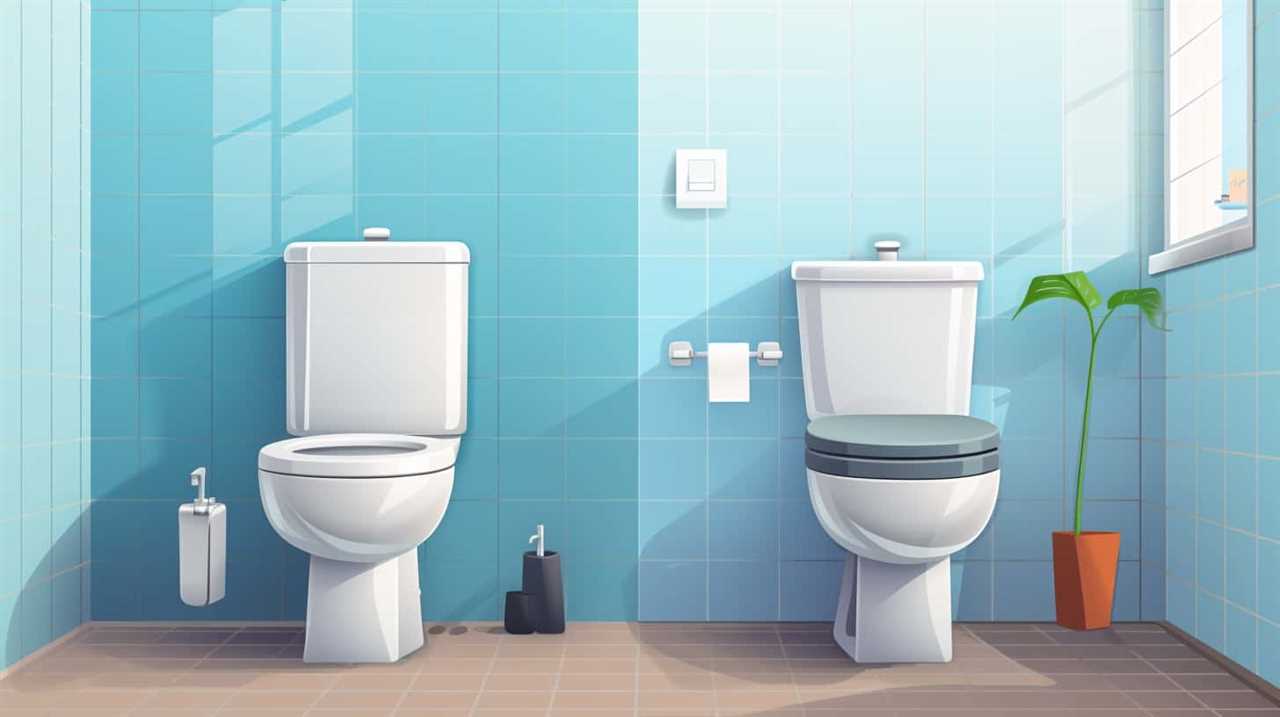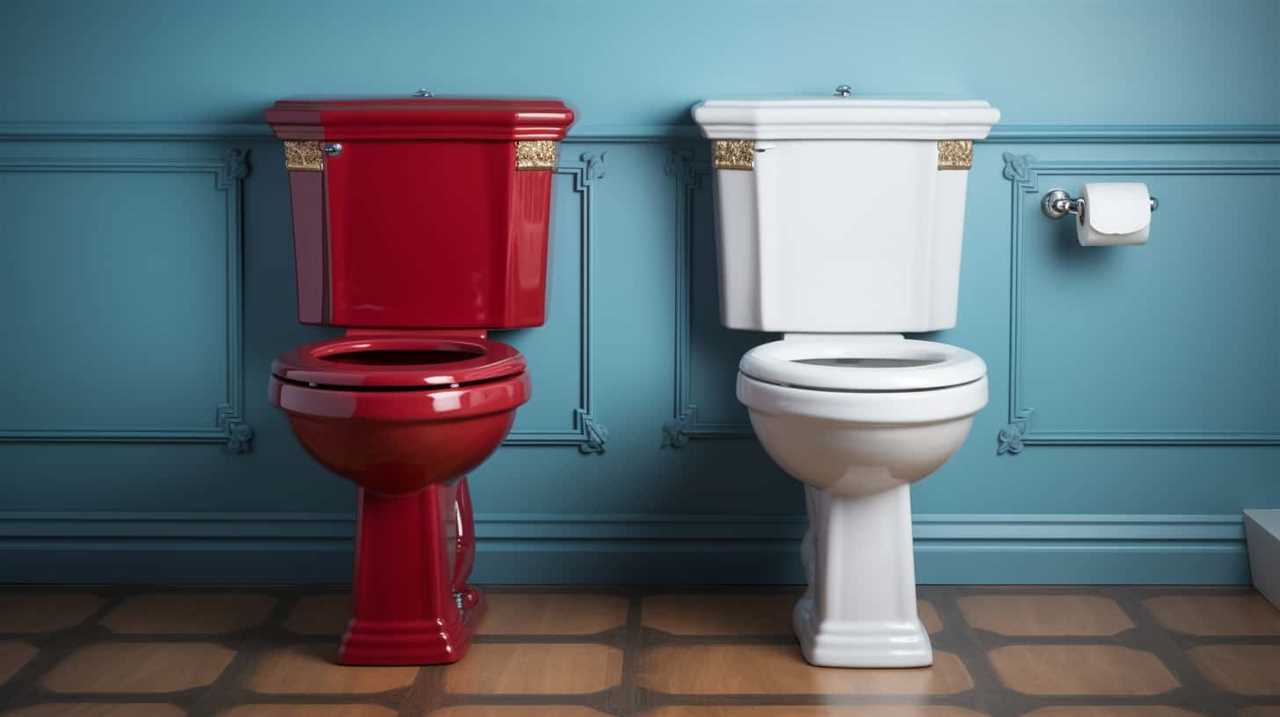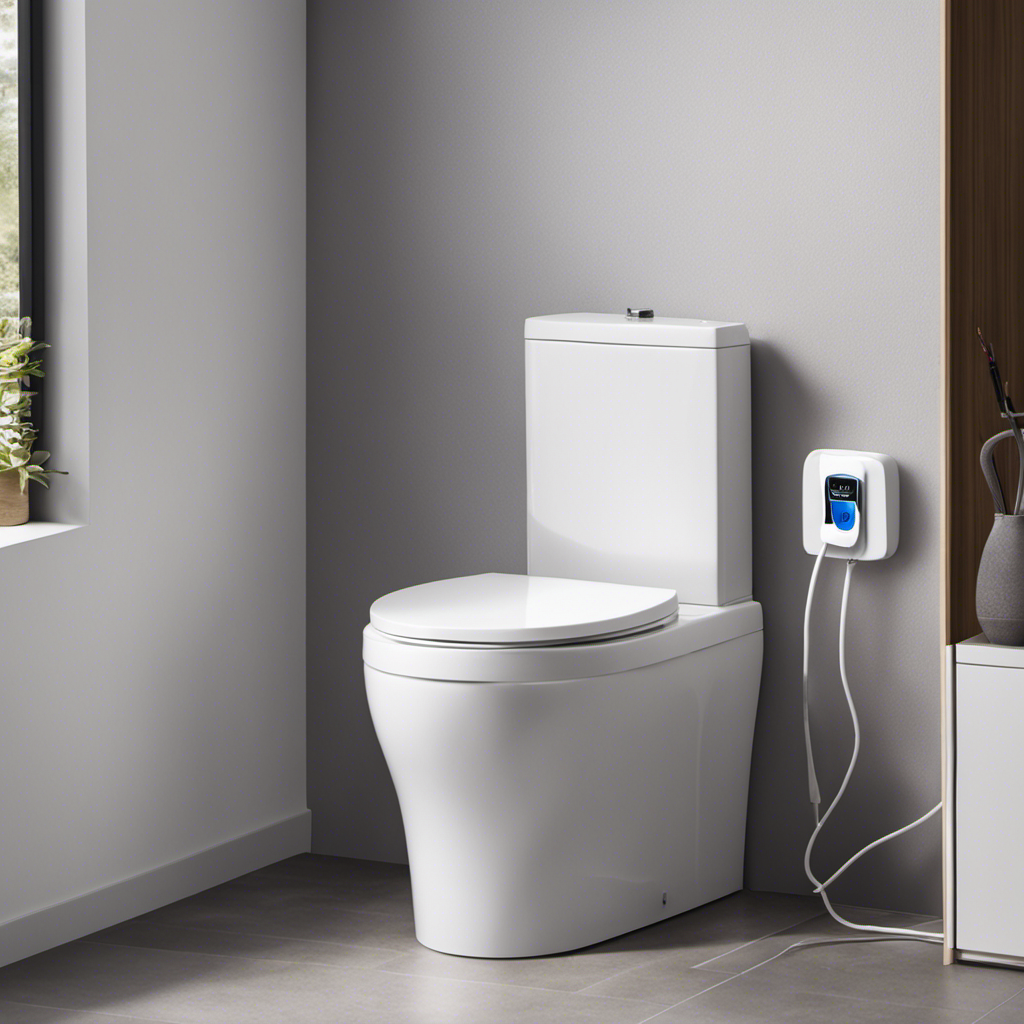Were you aware that a defective toilet flapper has the potential to waste as much as 200 gallons of water every day? That’s equivalent to filling up a bathtub!
Understanding how a toilet flapper works is crucial for homeowners who want to conserve water and avoid costly repairs.
In this article, we will explain the inner workings of a toilet flapper, common problems you may encounter, and provide step-by-step instructions on how to fix or replace a faulty flapper.
Let’s dive in and master the art of toilet flapper maintenance!

Key Takeaways
- Toilet flappers are crucial components of a toilet’s flushing mechanism and control the water flow from the tank to the bowl during flushing.
- Understanding the function and importance of toilet flappers is essential for homeowners to conserve water and prevent costly repairs.
- There are different types of toilet flappers available, such as flapper chain, rubber flapper, and adjustable flapper, each with its own advantages and considerations.
- Regular maintenance and cleaning of toilet flappers are necessary to ensure efficient flushing and prevent common problems like leaks and mineral buildup.
What Is a Toilet Flapper
A toilet flapper is a rubber valve that controls the flow of water from the tank to the bowl when the toilet is flushed. It’s a crucial component of the toilet’s flushing mechanism.
The installation of a toilet flapper is a simple process that can be done by following a few steps.
First, turn off the water supply to the toilet.
Then, remove the old flapper by disconnecting it from the flush valve.

Next, attach the new flapper onto the flush valve, ensuring a secure fit.
Finally, turn on the water supply and test the flushing mechanism.
There are different types of toilet flappers available, such as the flapper chain, rubber flapper, and adjustable flapper.
Each type has its own advantages and considerations, so it’s important to choose the right flapper for your toilet’s needs.

How Does a Toilet Flapper Work
To understand how a toilet flapper works, we need to delve into its mechanism and function.
The toilet flapper is a critical component of the toilet tank that controls the flow of water during flushing. When the toilet handle is pressed down, it lifts the flapper, allowing water to flow from the tank into the toilet bowl. This sudden rush of water creates the necessary force to flush away waste.
Once the flushing is complete, the flapper closes, sealing the opening between the tank and the bowl to prevent water from continuously flowing.
Proper toilet flapper maintenance is essential to ensure the smooth functioning of the toilet. Regular inspection and cleaning of the flapper can prevent issues such as leaks or incomplete flushes.

If you encounter any problems, such as water continuously running into the toilet bowl, it’s recommended to troubleshoot the flapper first.
Common Problems With Toilet Flappers
We often encounter common problems with toilet flappers that can disrupt the proper functioning of the toilet. To ensure the smooth operation of your toilet, it’s essential to perform regular toilet flapper maintenance.
Here are three reasons for toilet flapper leaks:
- Worn out flapper: Over time, the flapper can deteriorate due to constant exposure to water and chemicals in the tank. This can cause it to lose its sealing ability, resulting in water leaks.
- Improper installation: If the flapper isn’t installed correctly, it may not create a proper seal when the toilet is flushed. This can lead to water leakage around the flapper.
- Mineral buildup: Hard water can cause mineral deposits to accumulate on the flapper, preventing it from closing tightly. This can result in water constantly running into the bowl.
Understanding these reasons for toilet flapper leaks is crucial for effective troubleshooting.

Now, let’s explore the signs that your toilet flapper needs replacement.
Signs That Your Toilet Flapper Needs Replacement
One common sign that indicates the need for a toilet flapper replacement is when we notice water continuously leaking into the toilet bowl. This is a clear indication that the flapper isn’t sealing properly, allowing water to escape and causing wastage. It’s important to address this issue promptly to prevent further water loss and potential damage to the toilet.
To troubleshoot toilet flapper issues, start by inspecting the flapper for any signs of wear or damage. Look for cracks, tears, or deterioration in the rubber material. Additionally, check if the flapper is properly aligned and seated on the flush valve. If any of these issues are present, it’s recommended to replace the flapper to ensure proper functioning and prevent water leakage.
Regular toilet flapper maintenance is also crucial to prevent future problems.

Steps to Fix or Replace a Toilet Flapper
To fix or replace a toilet flapper, we’ll need a few simple tools and materials. Here are the steps to follow:
- Shut off the water supply: Locate the shut-off valve near the base of the toilet and turn it clockwise to stop the water flow.
- Remove the tank lid: Lift the lid and set it aside on a stable surface.
- Inspect and remove the old flapper: Look for any signs of damage or wear on the flapper. Disconnect the chain or strap from the flush lever and carefully remove the old flapper from the flush valve.
- Install the new flapper: Align the new flapper with the flush valve opening and secure it in place. Reattach the chain or strap to the flush lever.
- Turn on the water supply: Turn the shut-off valve counterclockwise to restore the water flow.
Frequently Asked Questions
Can I Use Any Type of Toilet Flapper in My Toilet?
Yes, we can use different types of toilet flappers, but it’s important to choose the right one for proper toilet flapper maintenance. Consider factors such as size, material, and compatibility with your toilet.
How Often Should I Replace My Toilet Flapper?
We should replace our toilet flapper periodically to ensure proper functioning. Signs of a worn out flapper include leaks, inconsistent flushing, and water running continuously. Regular maintenance is key to avoiding costly repairs.
Are There Any DIY Hacks to Temporarily Fix a Faulty Toilet Flapper?
There are several temporary fixes for common toilet issues, including faulty toilet flappers. These DIY hacks can help address the problem until a permanent solution can be implemented.

Can a Toilet Flapper Cause Water Leakage in Other Parts of the Toilet?
Yes, a faulty toilet flapper can cause water leakage in other parts of the toilet. It can lead to water seeping out and causing damage to the surrounding areas, such as the floor or the base of the toilet.
What Are Some Alternative Solutions to a Toilet Flapper for Water Conservation Purposes?
Some alternative solutions for water conservation purposes include using dual flush toilets, installing low-flow toilet tanks, or utilizing water-saving devices like toilet dams or fill cycle diverters.
Conclusion
In conclusion, the toilet flapper is a vital component in the functioning of a toilet. It plays a key role in regulating the water flow and preventing leaks.
By understanding how it works and recognizing signs of wear and tear, you can easily fix or replace a faulty flapper.

Just remember, a well-maintained toilet flapper keeps your bathroom running smoothly and avoids any unwanted surprises down the drain.
So, don’t let your toilet go with the flow, give that flapper the attention it deserves!










